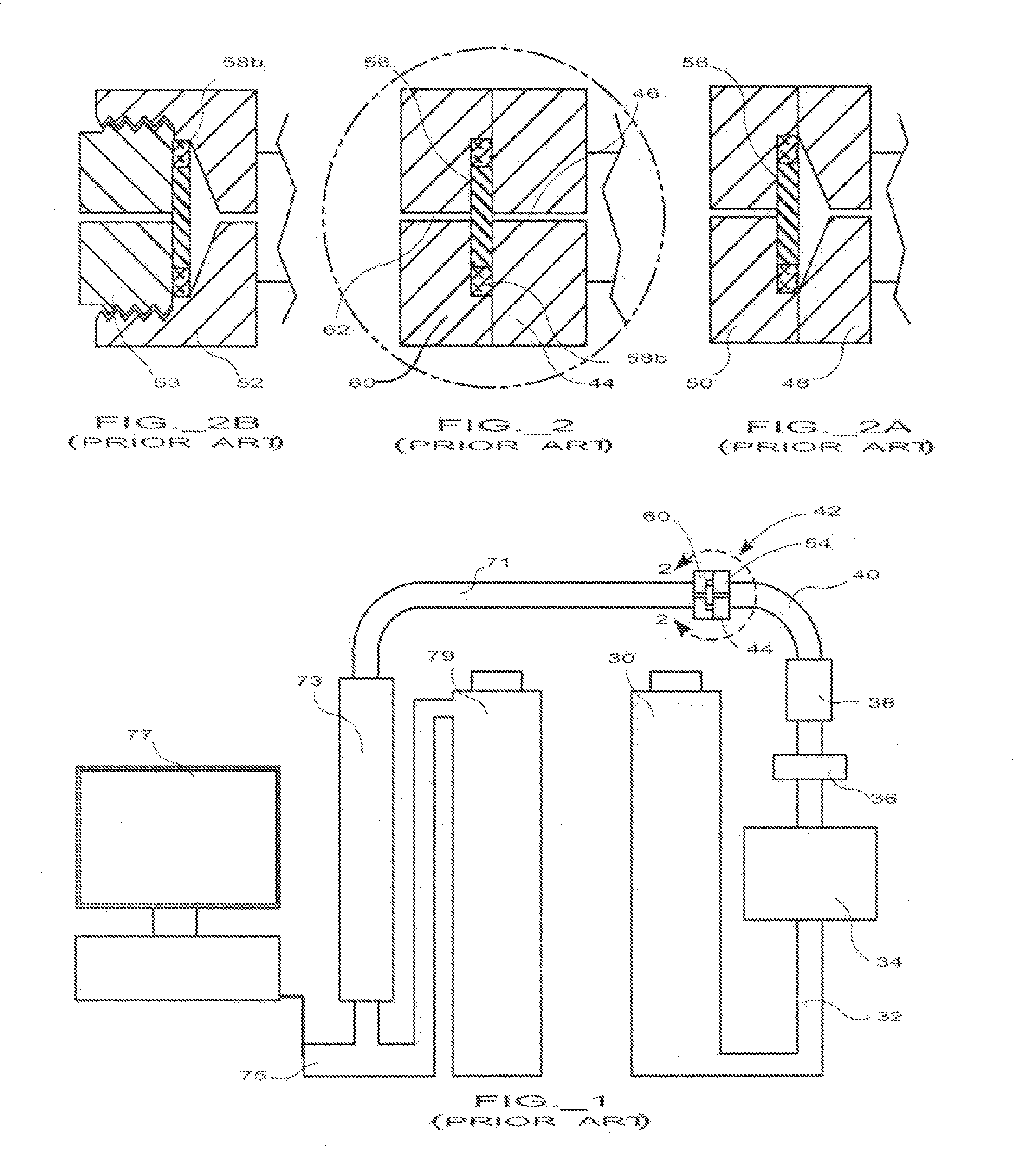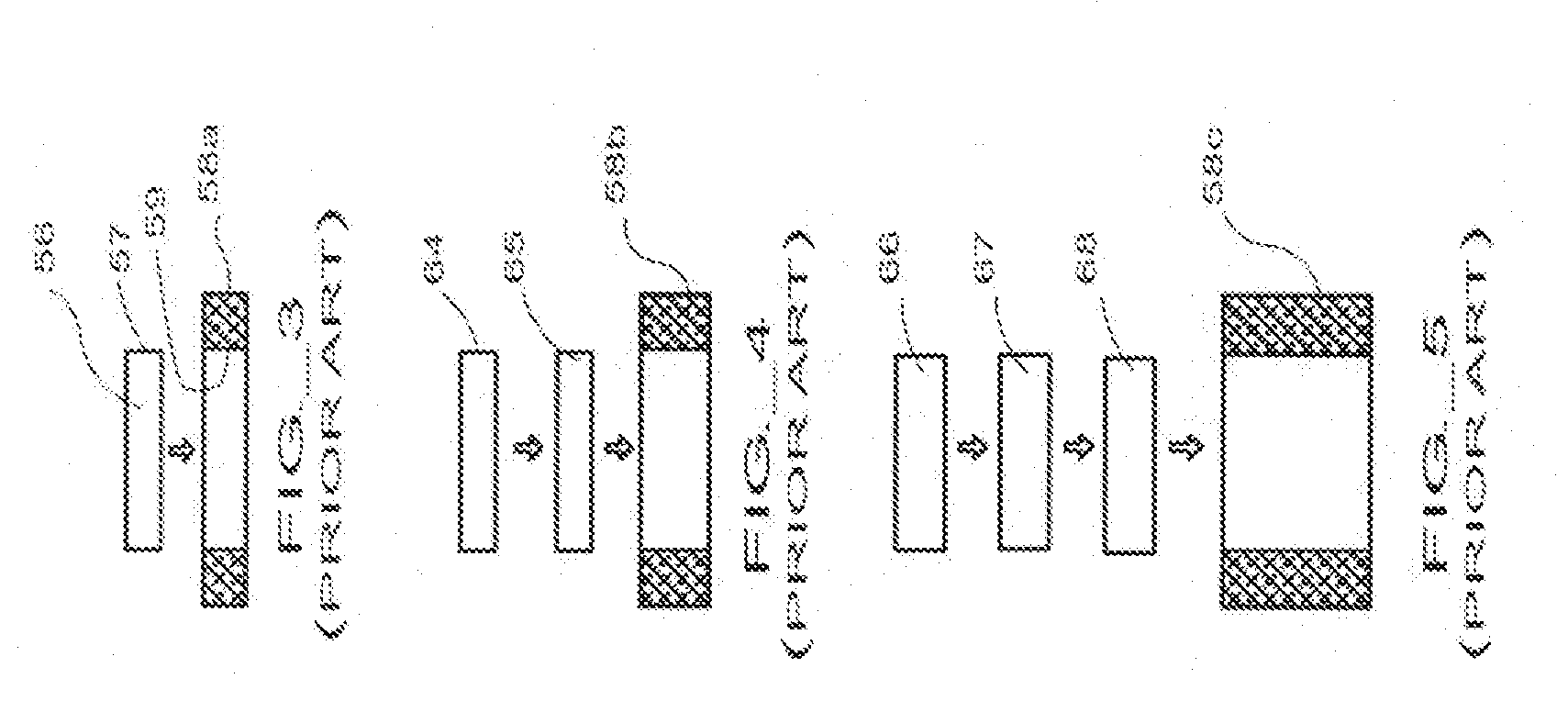HPLC frit filter assembly
a frit and assembly technology, applied in the direction of electric/magnetic/electromagnetic heating, separation process, instruments, etc., can solve the problems of compromising the filtration function of the frit and its assembly, the need to replace an expensive hplc column, and the difficulty in achieving the goal of maintaining a long life of the separation column, etc., to achieve the effect of higher melting poin
- Summary
- Abstract
- Description
- Claims
- Application Information
AI Technical Summary
Benefits of technology
Problems solved by technology
Method used
Image
Examples
Embodiment Construction
[0069]A HPLC system includes a solvent tank 30 having solvent flowing through a pipe 32 to a pump 34 which in turn pressurizes and drives solvent through a solvent filter 36 to an injection valve 38 where sample materials or other products to be analyzed are injected. The material is then driven through the piping (tubing) 40 to a stainless steel frit holder or prefilter assembly 42 containing a frit holder inlet fitting assembly 44, a stainless steel filter assembly 54, and a frit holder outlet fitting assembly 60. The filtered fluid once having passed through the frit filter in the prefilter assembly 42 passes through the piping 71 to analysis column 73, where as described above, the constituents move according to their analyte to a detector 75. A recorder / personal computer (PC) 77 receives analysis signals from the detector and the fluid coming out of the separation column is passed into a waste reservoir 79.
[0070]Alternate arrangements of prior art prefilter assemblies 42 are sh...
PUM
 Login to View More
Login to View More Abstract
Description
Claims
Application Information
 Login to View More
Login to View More - R&D
- Intellectual Property
- Life Sciences
- Materials
- Tech Scout
- Unparalleled Data Quality
- Higher Quality Content
- 60% Fewer Hallucinations
Browse by: Latest US Patents, China's latest patents, Technical Efficacy Thesaurus, Application Domain, Technology Topic, Popular Technical Reports.
© 2025 PatSnap. All rights reserved.Legal|Privacy policy|Modern Slavery Act Transparency Statement|Sitemap|About US| Contact US: help@patsnap.com



